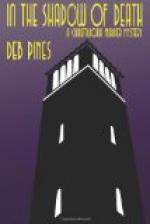The attack on the Stormberg positions, if it was boldly conceived, was badly carried out. The English general should have postponed the attack when it dawned upon him that he would not reach the enemy’s positions before daybreak; and he should have used the knowledge, common to most soldiers, that it is best to attack a foe’s weakest side. This was not done at Stormberg. We, too, suffered from ill-advised action—or rather, inaction. For we had had the opportunity of capturing, if not all, most of Gatacre’s men, with all their guns, and we neglected it! The victory would have been complete if we had only followed up our advantage. In those early days, however, some of our leaders regarded it as rather sinful to harass a retreating enemy.
SANNA’S POST.
On the occupation of Bloemfontein some of the burghers, discouraged and despondent, left for their homes. Lord Roberts’s proclamation, promising protection to all who should lay down their arms and settle quietly on their farms, enticed many to remain at home. Most, however, changed their minds after a few weeks’ rest and returned to their commandoes.
It was then, after they had rallied again, that General De Wet, on the eve of the 28th of March, left Brandfort with a commando 1500 strong and moved in the direction of Winburg. De Wet had made up his mind to surprise the English garrison which guarded the Bloemfontein Waterworks at Sanna’s Post, and so cut off the water supply of Bloemfontein.
With that object in view he made his movements thither by night, so as to keep the enemy in the dark as to his plans. Neither were these disclosed to the burghers, who were naturally anxious to know where they were going and what they were to do next.
On his way De Wet learnt that General Broadwood, dreading an attack of Commandant Olivier, had quitted Ladybrand and was marching on Bloemfontein with a strong force. This information was rather disconcerting, for now he had not only to reckon with the garrison, but to be ready for an engagement with a column 2000 strong, which might come to the relief of the garrison at any moment. In case of such an emergency, De Wet divided his forces into two parts. He placed one division—1050 strong with four guns—under the control of Generals Cronje, Froneman, Wessels, and Piet De Wet, with instructions to occupy the positions east of the Modder River and directly opposite the Waterworks, so as to check Broadwood, should he come to the rescue of the garrison.
Taking the remaining 350 burghers he set out to Koorn Spruit, a brook which flows into the Modder River. Arrived there, he carefully concealed his horses and men at a point where the road from the Waterworks to Bloemfontein passes through the brook. The other generals were to shell the garrison at daybreak, while he would fall on the troops if they tried to escape to Bloemfontein via Koorn Spruit.




